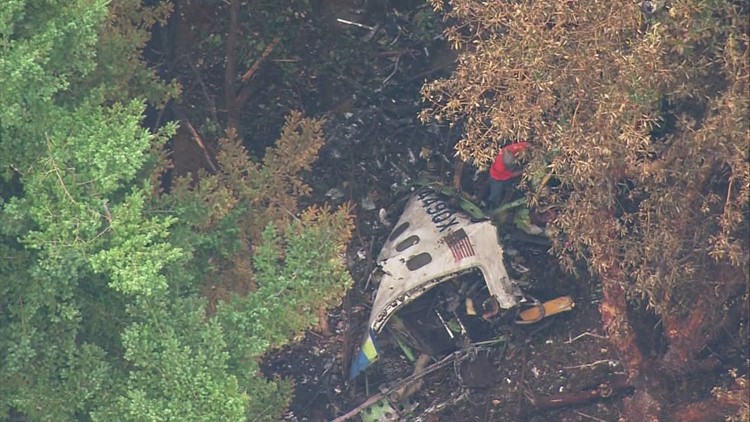An FBI investigation released Friday found a Horizon Air employee who stole a plane from Sea-Tac Airport crashed it intentionally on a south Puget Sound island.
Richard Russell, 28, also known as “Bebo,” took the Horizon Air Q400 Turboprop from a cargo area at the north end of the airport on August 10. Without communicating to air traffic controllers, he cut off another airplane and then managed to get the plane onto the runway and airborne.
F-15s were scrambled out of their base at Portland International Airport to intercept the plane. Russell was recorded as having multiple conversations with air traffic controllers who were trying to talk him into landing.
Russell flew it for over an hour before crashing it on Ketron Island. Russell was killed in the crash.
Data from the flight data recorder showed there was a significant sideslip on the airplane during the last minute of the flight, but the airplane appeared to stay in control, according to the FBI report.
"If the pilot had wanted to avoid impact with the ground he had time and energy to pull the column back, raise the nose, and initiate a climb," the report reads.
However, the column stayed forward of neutral and moved further forward about six seconds before the data stops recording.
The FBI says it found no evidence Russell received any former flight training. However, they say he was familiar with the checklist for starting an airplane and that they located internet searches where he found instructional videos.
On the cockpit audio recordings, Russell is heard telling air traffic controllers he didn't need that much help controlling the aircraft, because he had played some video games before. Although video games are different from actually flying, experts say flight simulation games are quite realistic.The question is, why crash?
"Although investigators received information regarding Russell’s background, possible stressors, and personal life, no element provided a clear motivation for Russell’s actions,” the report read.
Although this incident is considered extremely rare, what had happened to cause Russell to take the plane up and then intentionally crash it remains unknown.
In 2015, the co-pilot of a Germanwings jet is believed to have died by suicide by slamming his plane into a French mountainside killing everyone on board. The questions remains what – if anything – can be done to better screen and get help for employees.
It was clear later that night from his conversations with air traffic controllers, that Russell didn’t want to hurt anybody else. It was not an act of terrorism, which the FBI also concluded. But it was a major concern that night, especially in the early minutes once the flight got airborne.
The FBI also laid out a timeline of the incident beginning at 2:36 p.m. when Russell arrived at work to check in through employee security.
Five hours later at 7:15 p.m. he arrived with a tow vehicle at the cargo area at the far north end of the Sea-Tac airfield, known as Cargo 1. Five minutes later he’s on board the plane and soon starts it. He leaves the plane and turns the aircraft, which had been facing away from the runway, around toward the runway.
At 7:28 p.m., he reenters the plane, and four minutes later is pulling away from its parked location.
One minute later he is airborne. An hour and 13 minutes later, the plane crashed onto Ketron Island.
Russell was the only person on the plane, and the FBI says Russell acted alone, without any help.
The FBI will not be pursuing federal charges, because the FBI did not find any co-conspirators in the incident.
“The FBI found this was an isolated, unanticipated incident by one individual,” Alaska Airlines and its subsidiary Horizon Air said in a statement.
The company also cited a separate investigation by the Transportation Security Administration finding there were no violations of security regulations.
The FBI found Russell had the necessary security clearances to access the most sensitive areas of Sea-Tac, including access to the plane.
However, it is clear that Russell drove an airplane onto a busy airport without any clearance or authorization from controllers, much less possessing any proven competence to fly an airplane. Into that environment, a collision was possible.


